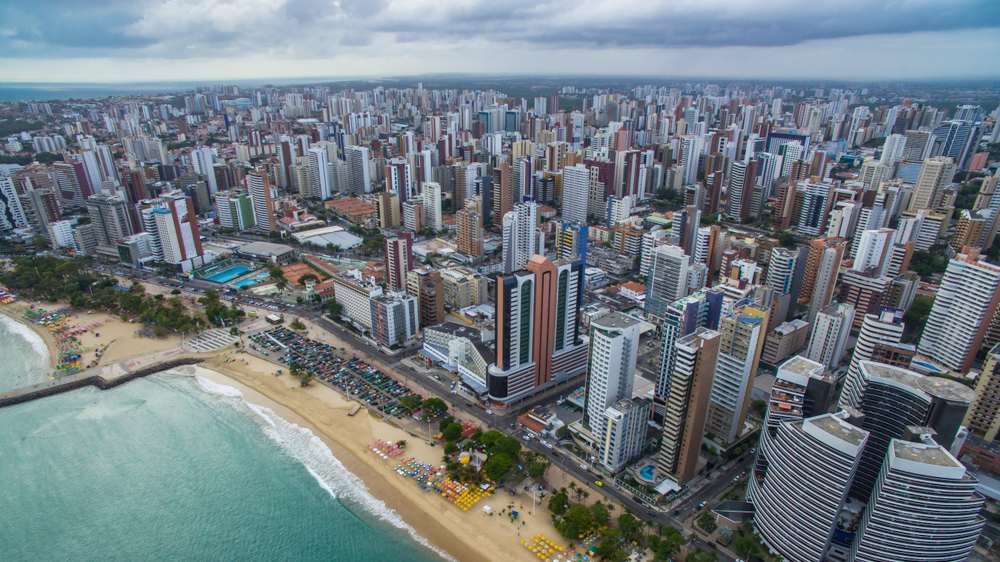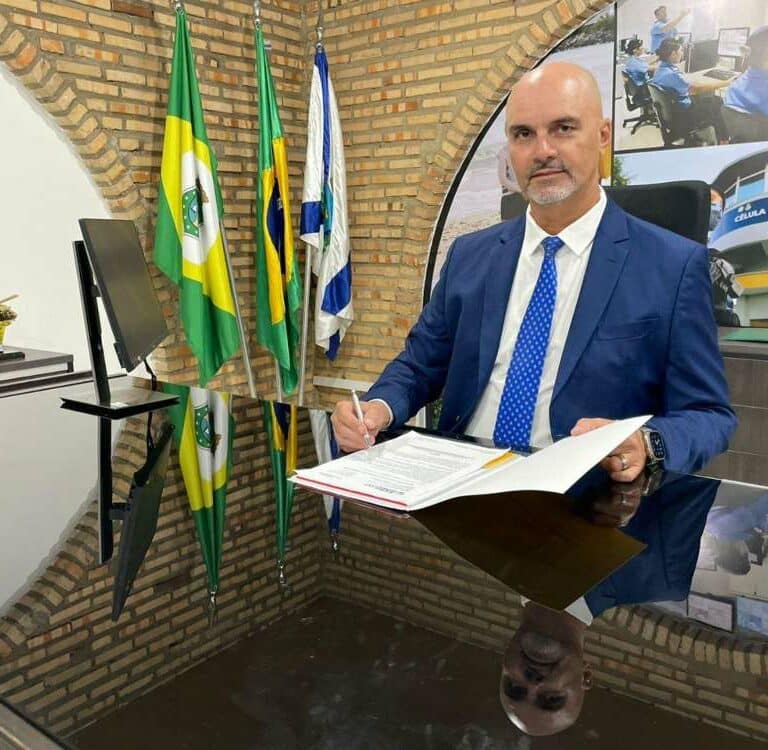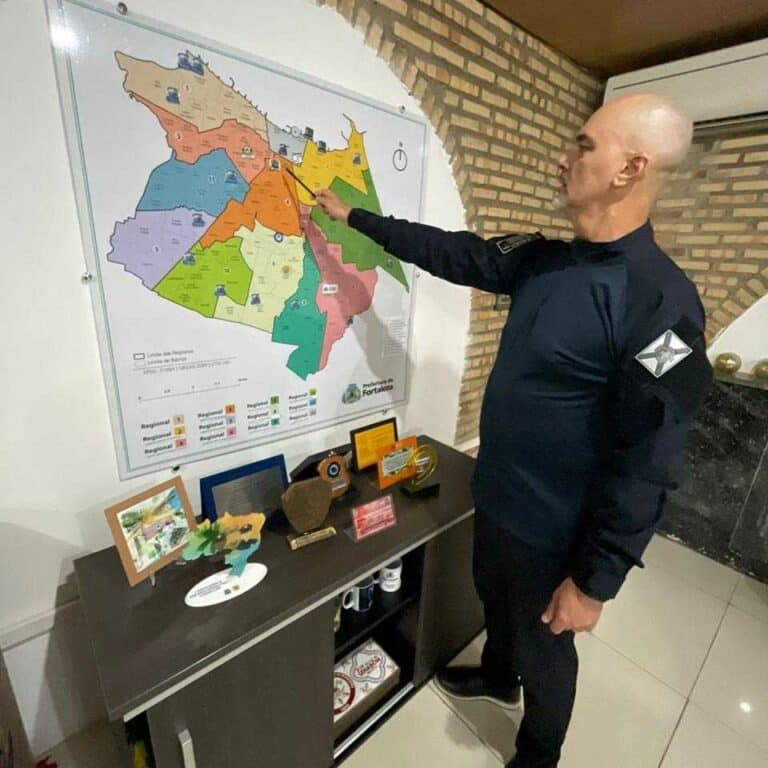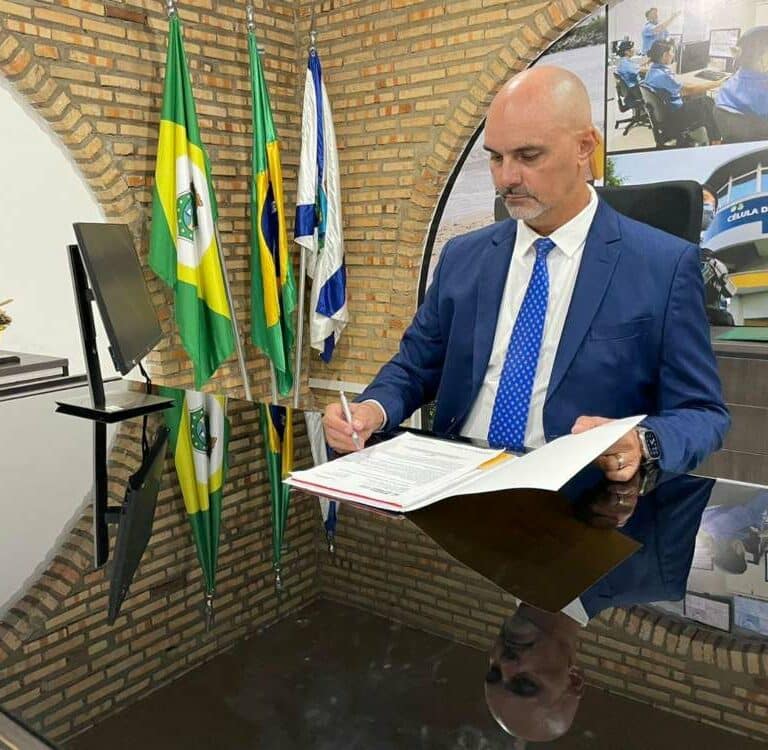Securing Brazil: video intelligence in the ‘fortress’ city


Victoria Rees
Share this content
Fortaleza, the capital of the northeastern Brazilian state of Ceará, leverages video intelligence to combat crime and improve the delivery of municipal services. Here, Col. Eduardo Holanda, Secretary of Security for Fortaleza, explores the full impact of this technology on the city.
Article Chapters
Toggle- Securing Fortaleza with video intelligence
- What are the projects and initiatives that have been implemented for municipal public safety in Fortaleza?
- Within the Smart City Fortaleza protocol, what are SESEC’s actions for the public policy of video surveillance combined with ISS technologies?
- How does the adoption of ISS video intelligence and analytics aim to benefit the general population?
- What are the main results achieved through integrated monitoring solutions? How has the system contributed to crime reduction in Fortaleza?
- How many cameras are currently operational in Fortaleza?
- Are there plans to expand the system’s coverage in the city?
- How are data and images captured by the cameras handled?
- How is the video analytics system used for identifying suspicious activity or crimes in real time?
- What types of analytics and algorithms are applied to captured videos?
- Is there collaboration with other security or government agencies in using the system?
- Is there a centralized control center for monitoring video surveillance cameras?
- How does the city prepare for special events or emergencies using this system?
- What are the main challenges in maintaining and operating this surveillance and video intelligence system?
- Are there plans to integrate the system with other security technologies like facial recognition?
- What are the future plans to improve and expand the video surveillance system in Fortaleza?
Securing Fortaleza with video intelligence
Located on the northeast coast of Brazil, Fortaleza, which is Portuguese for “Fortress” and so named for the role it played in ongoing colonial battles throughout the 17th and 18th centuries, is one of the largest cities in the country with a population of just over four million.
After experiencing abnormally high rates of homicide and property crimes in 2017, the city examined making public security policy changes that eventually led them to new investments in security technology by the City of Fortaleza, through the Municipal Secretariat of Citizen Security (SESEC) and Municipal Guard of Fortaleza (GMF).
The following year, Fortaleza officially implemented its Municipal Urban Protection Program (PMPU) and deployed a wide range of new security solutions, including video management software and analytics from ISS.
Among the specific offerings deployed as part of the project were SecurOS Enterprise, SecurOS Auto, SecurOS MCC and the SecurOS Tracking Kit.
Col. Eduardo Holanda, Secretary of Security for Fortaleza, discusses how this new generation of AI-powered video intelligence is helping to reduce crime and improve the lives of everyday citizens across the city.

What are the projects and initiatives that have been implemented for municipal public safety in Fortaleza?
The City of Fortaleza has developed numerous public safety projects and initiatives at the local level.
These actions span across almost all municipal departments, ranging from education to environment and urbanism, and from youth to human rights and social development, among others.
However, most of these initiatives are concentrated within the scope of the Secretariat of Citizen Security (SESEC), which develops overarching programs that give rise to many specific projects and actions.
Presently, the City Hall and its departments, including SESEC, prioritize adherence to scientific guidelines grounded in data and evidence.
These guidelines inform the development of programs, projects and actions, especially aimed at safeguarding the most vulnerable populations in the city.
Some of the initiatives directly undertaken or involving SESEC participation include:
- Municipal Urban Protection Program (PMPU): designed to monitor and mitigate violence, accidents and natural disasters, the PMPU aims to enhance citizen security through science, technology, innovation, integration and intelligence. The PMPU operates across 15 priority areas through Community Protection Cells, with plans to expand to two more areas soon
- Establishment and implementation of a policy for the protection of victims of domestic violence, alongside enhanced protection measures for victims of sexual harassment on public transport, including the deployment of panic buttons
- Expansion of video surveillance to urban parks in collaboration with the Environmental Protection Inspectorate (IPAM)
- Weekly meetings of the Integrated Management Office (GGI) involving various municipal, state and federal agencies to plan integrated operations for events and other activities
- Setup and maintenance of the Beira-mar Integrated Operations Center (COI-BM), which accommodates both permanent and occasional seats for other agencies working in tandem with GMF. Additionally, a Situation Room, where many joint actions are monitored and planned citywide, will serve as a prototype for the forthcoming Fortaleza Integrated Video Surveillance Management Center (CGIVFOR)
- Support for expanding video surveillance on fixed posts overseen by the Coordination of Citizen Inspectorates of the Municipal Guard, covering secretariats and other municipal facilities
- Support for expanding video surveillance in educational institutions under city hall’s purview (schools and daycare centers), which currently utilize over 3,350 cameras
- Support for implementing the Safer Access Program (AMS) in over 100 schools across Fortaleza. This program, based on the International Committee of the Red Cross (ICRC) methodology, diagnoses and addresses situations of violence that may endanger the school environment, monitored from the Video Monitoring Center of the School Safety Inspectorate (ISE)
- Adoption of new technologies in GMF’s routine patrols and operations during large events, including the use of drones
Within the Smart City Fortaleza protocol, what are SESEC’s actions for the public policy of video surveillance combined with ISS technologies?
Increased integration of video surveillance across Fortaleza’s municipal departments to ensure efficient utilization of resources, as well as:
- Multidisciplinary actions utilizing video surveillance with various agencies operating in a coordinated manner
- Shared use of video surveillance resources among State Government agencies and partner institutions
- Adoption of innovative technologies to integrate analytics and video intelligence resources, focusing on rapid response by public agents
How does the adoption of ISS video intelligence and analytics aim to benefit the general population?
The video intelligence will deliver more effective and efficient policies in public safety, road safety, civil defense, urban planning, janitorial services and environmental protection among others.
Technology also plays a key role in increasing accuracy in decision making and consequently, enhancing the performance of available human resources, enabling them to ‘do more’ without harming or overloading the performance of municipal public security.
What are the main results achieved through integrated monitoring solutions? How has the system contributed to crime reduction in Fortaleza?
The video intelligence and other integrated solutions have enabled us to monitor violence and crime throughout the city, aiding in preventive actions and faster identification and response to various crimes committed against both people and property.

For example, we have video evidence of attempted thefts of bicycles and parked vehicles, as well as graffiti on numerous public and private facilities.
We have also been able to identify violence against women (domestic and sexual) and even attempted homicides, as well as actual murders.
Thus, the system has helped in thwarting many crimes and assisting in apprehending criminal suspects, while also contributing to urban planning, civil defense, janitorial services, and road safety policies.
In summary, it enhances efficiency in detecting, mitigating and preventing violence, accidents and disasters.
How many cameras are currently operational in Fortaleza?
Approximately 2,000 urban cameras, including pan-tilt-zooms (PTZs) and fixed cameras, serve various purposes such as security, urban mobility, janitorial services and urban planning.
Additionally, there are over 5,000 cameras monitoring city hall assets.
Plans for standardizing the video surveillance software platform and expanding camera coverage are underway.
Are there plans to expand the system’s coverage in the city?
Yes, there are plans to expand video surveillance coverage in various areas including schools, fixed posts, urban parks and neighborhoods.
New cameras will be deployed in partnership with community protection cells and to support projects such as “Ponto do Entregador”, “Ecoponto” and “Parada Segura”.
How are data and images captured by the cameras handled?
All images and data are processed in compliance with the General Personal Data Protection Law (LGPD).
Images are stored for consultations, case studies and criminal investigations.
Analytics-generated data are used for statistical analysis and decision-making in public policies related to safety, traffic, urban planning and civil defense.
How is the video analytics system used for identifying suspicious activity or crimes in real time?
The video intelligence system utilizes analytics provided by ISS to identify suspicious incidents and potentially connected individuals or groups with crimes, contributing to the efficiency of public forces.
What types of analytics and algorithms are applied to captured videos?
Currently in the video intelligence solution, license plate reading, behavioral analysis and pattern detection algorithms are utilized, providing real-time data for monitoring teams and investigative purposes.
Is there collaboration with other security or government agencies in using the system?
Yes, collaboration occurs through partnerships with agencies like the Municipal Authority of Traffic and Citizenship of Fortaleza, Inspection Agency of Fortaleza (AGEFIS) and the Military Police of Ceará (PMCE), expanding actions in integrated operations and day-to-day monitoring.
Is there a centralized control center for monitoring video surveillance cameras?
The Beira-mar Integrated Operations Center (COI-BM) serves as the main control center and as a working prototype for the Fortaleza Integrated Video Surveillance Management Center (CGIVFOR), which is expected to be completed by the second half of 2024.
How does the city prepare for special events or emergencies using this system?
Various city departments/agencies participate in operational meetings to coordinate security preparations for events.

The video surveillance and video intelligence system assists field teams in pre-event reconnaissance, monitoring during events and post-event evaluation.
An example of this coordination can be found in our preparations for traditional New Year’s Eve festivities in Fortaleza, considered last year (2023) the largest in Brazil, with an audience of approximately 1.2 million people in the same space (Aterro da Praia de Iracema), for which there is a convergence of efforts of several institutions that hold virtual (online) and face-to-face planning meetings.
This integrated work starts several weeks in advance and continues during the event within the scope of the Situation Room of the COI-BM and concludes with evaluation and feedback meetings after the event.
This event has integrated the action plans of dozens of sectors/agencies/secretariats of the city and the Government of the state of Ceará.
What are the main challenges in maintaining and operating this surveillance and video intelligence system?
Standardizing procedures and adapting to technological changes are ongoing challenges.
Maintenance needs to be agile to avoid system resource unavailability, which could lead to issues for the city.
Are there plans to integrate the system with other security technologies like facial recognition?
Yes, there are plans to implement various analytics for violence prevention, including facial recognition, to address demands related to crime prevention and public safety.
Among the applications we have seen demand for these capabilities in include detecting incidents of cable theft, vandalism on public property, crowd identification, people counting, behavioral analysis, flooding, identification of drownings and water accidents in general, as well as identification of large gatherings of motorcycles in “rolezinhos do grau” and other crimes committed by organized groups of individuals.
Use of the system could also be extended to public spaces and municipal facilities where medium and large events are held, such as the waterfront of Avenida Beira Mar and Aterro da Praia de Iracema, as well as places with a large flow of residents and tourists that already have hundreds of urban cameras, the latter being where the biggest New Year’s Eve celebration in Brazil takes place.
What are the future plans to improve and expand the video surveillance system in Fortaleza?
Mayor José Sarto wants future plans to focus on enhancing violence prevention, increasing proximity to the population, and strengthening technological and institutional integration.
The establishment of the Fortaleza Integrated Video Surveillance Management Center (CGIVFOR) aims to make Fortaleza a pioneer in utilizing technologies like video intelligence for citizen safety and smart city advancement.
In short, it is to make Fortaleza a vanguard capital in the use of technologies of this nature, providing citizens with a safe, welcoming, orderly environment with a higher quality of life.
This interview with Col. Eduardo Holanda, Secretary of Security, Fortaleza, was originally conducted in February 2024.
To find out more about ISS and its solutions, click here.


